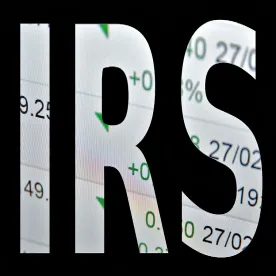This GT Alert covers the following:
-
New facsimile filing procedure for Form 14457
-
Expanded disclosure for cryptocurrency
-
New penalty structure for cases involving employment, estate, and gift tax
-
New procedure for disclosing inability to pay tax liability, penalties, and interest in a voluntary disclosure
On Feb. 15, 2022, the IRS announced revisions to Form 14457, the Voluntary Disclosure Practice Preclearance Request and Application. The longstanding Voluntary Disclosure Practice is a way for taxpayers who have criminal exposure for willfully failing to comply with their U.S. reporting requirements to resolve the issue with the IRS. Although a voluntary disclosure does not guarantee immunity from prosecution, the government will consider the taxpayer’s effort to come into compliance when making a charging decision. The IRS reiterates that the Voluntary Disclosure Practice does not apply to taxpayers without criminal tax exposure. Whether or not a taxpayer behaved willfully requires a detailed analysis of the facts.
To initiate a voluntary disclosure, a taxpayer must file Form 14457 with IRS Criminal Investigation (IRS-CI) in two parts: (i) the taxpayer first files the Preclearance Request at Part I to determine whether he or she is eligible to make a voluntary disclosure; and (ii) if the taxpayer receives preclearance, they must file the Voluntary Disclosure at Part II within 45 days of the date of pre-clearance unless IRS-CI grants an extension. Taxpayers must sign Part II under penalty of perjury. Therefore, they should take care to make a complete and accurate submission. If IRS-CI approves the taxpayer’s submission, it will issue a Preliminary Acceptance Letter and forward the case for a civil examination. For a more detailed explanation of the procedures for domestic and offshore voluntary disclosures, please see, “IRS Releases New Voluntary Disclosure Procedures for Post 9-28-2018 Offshore and Domestic Disclosures.”
Taxpayers considering making a voluntary disclosure should be aware of the following material revisions to Form 14457:
-
Method of Filing: Previously, taxpayers were required to mail Part II of the Form 14457 to IRS-CI. The IRS will now accept both Parts I and II by facsimile. Although IRS-CI will still accept the form by mail, it encourages taxpayers to use the facsimile procedure to reduce processing times. The IRS confirmed that it will also accept photocopies, facsimiles, and scans of taxpayer signatures. However, the IRS may still request original documents in certain cases. Therefore, when a taxpayer files Form 14457 by facsimile, he or she is required to retain the original signed form for six years from the date Part II is filed with IRS-CI.
-
Expanded Cryptocurrency Disclosure: The IRS continues to aggressively pursue taxpayers who use virtual currency to evade U.S. reporting requirements. Because more taxpayers hold virtual currency, the IRS expanded the section for reporting virtual currency on Part I. The IRS acknowledges that virtual currencies are constantly evolving, so it construes the term “virtual currency” very broadly. Taxpayers are required to disclose all non-compliant virtual currency they owned, controlled, or were the beneficial owner of, directly or indirectly, during the disclosure period. Non-compliant virtual currency includes any virtual currency that a taxpayer should have reported on a federal income tax return or other information return but failed to do so. This includes virtual currencies held through entities. Each virtual currency is required to be identified separately, including the date it was acquired and the date it was disposed. Taxpayers are also required to identify any “mixers” or “tumblers” used in connection with the virtual currency or any virtual currency transactions during the disclosure period and the purpose for using them.
-
Penalty Structures: The revised Form 14457 provides the following penalty structures for taxpayers with employment tax or estate and gift tax issues:
-
Employment Tax: In cases involving employment tax, the IRS will apply one civil fraud or fraudulent failure to file penalty equal to 75% of the tax for the tax period with the highest employment tax liability. No accuracy-related penalties are applied to other quarters in the disclosure period. The failure to deposit penalty will also apply to each quarter in which the taxpayer failed to make deposits with the IRS. For tax deposits made more than 15 days after the due date, the failure to deposit penalty is equal to 10% of the underpayment.
-
Estate Tax: In cases involving estate tax issues, the IRS will impose a civil fraud or fraudulent failure to file penalty, but the rate will be reduced from 75% to 50% of the estate tax deficiency.
-
Gift Tax and Generation-Skipping Transfer Tax: In cases involving gift tax or generation skipping transfer tax (GST) issues for multiple years, the normal six year disclosure period will not apply. Rather, taxpayers are required to submit original or amended gift tax returns for each year. The IRS will apply one civil fraud penalty or fraudulent failure to file penalty equal to 75% of the tax for the tax year that has the highest gift tax or GST liability. No accuracy-related penalties will be applied to the other tax years. Where the case only involves one year, the penalty will be reduced from 75% to 50% of the gift tax or GST liability.
-
-
Inability to Pay: To participate in the Voluntary Disclosure Practice, a taxpayer agrees to cooperate by making a full payment of the tax, penalties, and interest. If a taxpayer expects that he or she will not be able to make a full payment, the taxpayer is now required to disclose it on Form 14457. Additionally, the taxpayer is required to submit a proposed payment arrangement and a complete Form 433-A, Collection Information Statement. The taxpayer bears the burden of proving his or her inability to pay.
The failure to make a complete and accurate voluntary disclosure can result in removal from the Voluntary Disclosure Practice, criminal prosecution, and more severe civil penalties for each tax period. Because Form 14457 is signed under penalty of perjury, it is critical that the submission is complete and accurate. Taxpayers who are considering making a voluntary disclosure should consult with a qualified tax professional to determine their eligibility for the Voluntary Disclosure Practice and to understand how the revisions to Form 14457 affect their submission.




 />i
/>i

